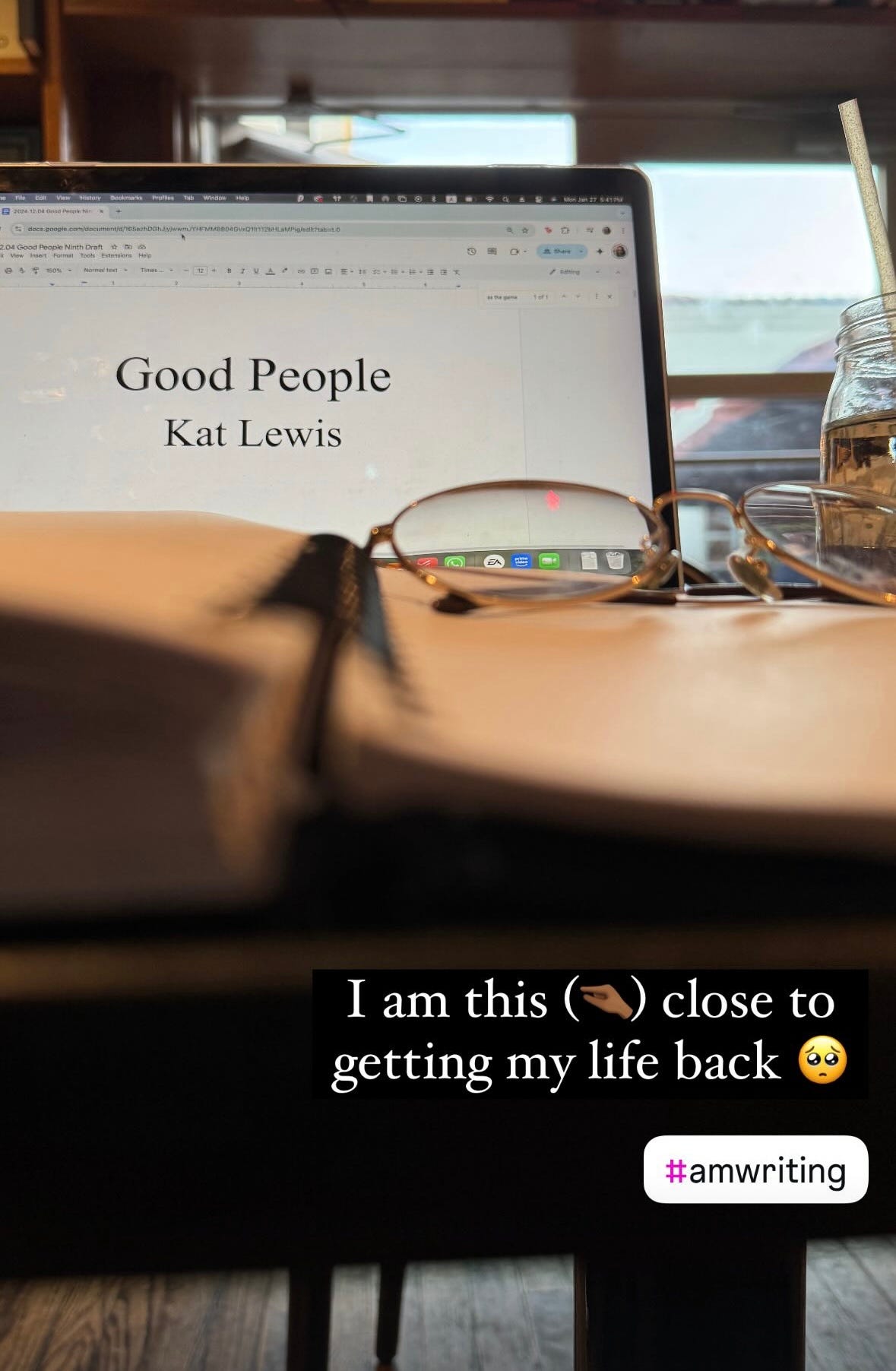A Guide to Developing Character Desire
Four Guiding Questions for Character Goals
Update (2/2/25)

This week, I crossed the 80% mark on what might be (fingers crossed!) the final draft of Good People. The endgame for this revision is in sight, but all this progress means that I need a little more time to make our next lesson—the one-page outline—a strong resource for your writing life.
All that said, this week’s craft lesson is a repost of one of our first lessons from 2022. A lot of new subscribers have joined our community since then, and the character development resources in this lesson have been absolutely invaluable to my own writing life, so I want to make sure all of our new community members get their eyes on this post.
In addition to that, our one-page outline lesson will very much be in conversation with this lesson on character goals. You’ll get the most out of our next lesson if the takeaways from this one are fresh in your mind.
How to Develop Character Desires
Learning Objective: By the end of this post, you will know how to develop your character’s goals with four guiding questions.
For us writers, the stakes are incredibly high at the beginning of a story. In today’s attention economy, we have a very short window to grip our readers. After all, why should your audience sit down and read your story when they could be scrolling on Instagram, hanging out with friends, or watching the latest HBO drama?
Hooking a reader comes down to one simple craft element: character goals. If your reader doesn’t immediately understand your character’s needs and desires, your reader will not care about your character. If the reader doesn’t care about your character, they won’t care about your story, and they will probably stop reading.
As a reminder, I teach western storytelling conventions because this is the tradition I write in. There are, of course, no rules in writing. All of these lessons have two purposes: (1) to explain the tools I use as a professional fiction writer and narrative designer and (2) to demonstrate how they might help you and your writing life. Take what’s useful and leave what’s not.
To keep our reader’s attention, we must introduce three things as soon as possible:
The Character
Their Goal
Their Main Obstacle
When I was a managing editor for a literary magazine, the number one reason why I rejected a story was because the writer took too long to establish the protagonist’s goals and obstacles. Answering these four guiding questions will help you (1) develop fully realized characters and (2) introduce their goals and obstacles at the very beginning of the story.
The Four Elements of Character Goals
1. What does the protagonist want?
This is the protagonist’s external goal. The answer to this question must be concrete and specific to the character. What is your character trying to win, stop, escape, or retrieve by the end of the story?
Here are some examples of external goals.
Vague, abstract goal:
Morgan wants to fall in love.
Concrete, specific goal:
Morgan wants Taylor to propose to her.
This second goal is concrete because Morgan is trying to retrieve a marriage proposal from Taylor. Here are some examples from Avengers Infinity War:
Vague, abstract goal:
The Avengers want to save the world.
Concrete, specific goal:
The Avengers want to stop Thanos from collecting all six infinity stones.
2. What does the protagonist need to believe they have gotten what they want?
I added this question to my character development process after reading Wired for Story by Lisa Cron. This question is crucial because it does two things:

